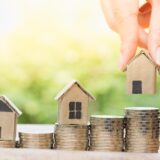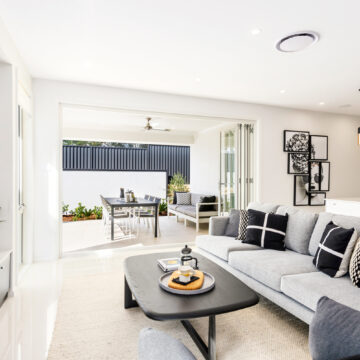In the world of architectural design, timber cladding has seen a remarkable comeback, catching the interest of both designers and homeowners. Among timber cladding types, external timber cladding has become a popular option for both residential and commercial buildings because of its capacity to improve a building’s looks while providing a variety of practical advantages. This introduction lays the groundwork for delving into the realm of timber cladding and illuminating its traits, adaptability, and potential benefits for architectural projects.
Timber cladding continues to be a timeless and adaptable alternative, connecting both tradition and creativity as architectural trends change. Timber cladding gives architects and designers a chance to construct aesthetically pleasing and environmentally responsible structures, whether it is used as the main facade material or as an accent feature. By utilising timber cladding, we not only give our structures a natural beauty but also link our designs with sustainable methods, fostering a healthy coexistence of architecture and the environment.
Get to Know Timber Cladding
Timber cladding is the process of using boards or panels made of wood to finish the exterior of buildings. By attaching hardwood materials to the exterior walls, this technique offers protection, insulation, and an aesthetically pleasing façade. Numerous building types, including homes, workplaces, retail establishments, and public buildings, can be covered with timber cladding. Timber’s adaptability opens up a variety of design possibilities, from rustic and traditional to sleek and modern.
Design Versatility and a Pleasing Aesthetic
The visual attractiveness of timber cladding is one of the main factors contributing to its rising popularity. Any architectural design benefits from the timeless charm and natural warmth of wood. Architects and designers have a wide range of possibilities for colour, texture, and grain patterns when using timber cladding. Timber cladding can be altered to obtain the desired look, whether it be a contemporary, Scandinavian-inspired appearance or a rustic, cabin-like atmosphere.
Environmentally Friendly and Sustainable
Timber cladding is praised for its durability and advantageous effects on the environment. Unlike other building materials that demand high levels of energy and produce greenhouse gas emissions during manufacture, wood is a renewable resource. Timber from forests that are properly overseen and ethically harvested aids in reducing destruction and fostering biodiversity. Additionally, wood functions as a carbon sink, removing carbon dioxide from the air and lowering its concentration in the environment. Architects and homeowners can help create a more environmentally friendly future by choosing timber cladding.
Energy Efficiency and Thermal Insulation
Timber cladding has advantages that go beyond its aesthetic appeal and environmental friendliness. Wood is a superb natural insulator that offers thermal efficiency and lowers energy use. It reduces the need for excessive heating or cooling by minimising heat loss in the winter and gain in the summer, helping to control internal temperatures. Buildings that use timber cladding can therefore obtain greater energy efficiency ratings and help bring down energy costs.
Longevity and Tenacity
Timber cladding can survive for many years if maintained properly. With the right preparations, wood can survive a variety of weather elements, such as rain, snow, and sunlight. Modern wood cladding systems are made to withstand moisture and microbial degradation, increasing their durability. Regular upkeep, including periodic cleaning and resealing, assures the cladding’s longevity and maintains its aesthetic attractiveness.
The terms “timber cladding” and “external timber cladding” are often used interchangeably, but there can be a subtle distinction between the two. Let’s explore the difference:
External Timber Cladding vs. Timber Cladding
The terms “timber cladding” and “external timber cladding” are often used interchangeably, but there can be a subtle distinction between the two. Let’s explore the difference:
Timber Cladding
Timber cladding refers to the practice of using timber boards or panels as an exterior finish for buildings. It involves applying wooden materials to the outer walls to enhance aesthetics, provide protection and insulation, and create a visually appealing facade. Timber cladding can be made from various types of wood, such as cedar, pine, or oak, and comes in different profiles, including shiplap, tongue and groove, or board-on-board. The primary purpose of timber cladding is to improve the appearance of the building while offering functional benefits.
External Timber Cladding
External timber cladding, on the other hand, specifically emphasises the external aspect of the cladding application. It refers to timber cladding that is exclusively used on the exterior of a building, typically for weatherproofing and enhancing the building’s appearance from the outside. External timber cladding focuses on providing protection against the elements, improving insulation, and adding aesthetic value to the building’s exterior.
In essence, while timber cladding is a broader term encompassing the application of timber as an exterior finish, external timber cladding specifically highlights the role of timber in enhancing and protecting the exterior of a building. It’s worth noting that the terminology may vary in different contexts and regions. Some may use the terms interchangeably, while others may make a clearer distinction between the two. Ultimately, the goal is to achieve an aesthetically pleasing and durable exterior using timber as the primary material.
Conclusion
Wood cladding combines aesthetics, sustainability, and use. It is a valuable addition to any architectural project because of its timeless attractiveness, environmental friendliness, and usefulness. Timber cladding is a testament to the ability of natural materials to produce aesthetically appealing, environmentally responsible, and long-lasting structures as we move towards a more sustainable future.
















